
Microsoft’s Forza brand has cemented its reputation as one of the best names in the business. Be it the vast open worlds of Horizon or the meticulously detailed tracks of Motorsport, the Forza series has continually impressed in terms of visual fidelity and jaw-dropping attention to detail.
With Forza Horizon 5, Playground Games set a new benchmark for racing games – and now the baton has been passed on to Turn10 with its latest Forza Motorsport. This soft reboot of the simulation racing franchise is the developer’s debut title on the new generation of Xbox consoles, and it does a great job of leveraging the machine’s features to create a game that’s arguably the best racer on the market.
In this technical analysis, we will be taking a look at the game and breaking down individual aspects like lighting, and car models – and breaking down the rendering techniques used to bring this game to life.
Forza Motorsport – Game Engine And Overview
Much like its predecessors, Forza Motorsport 2023 is developed using the proprietary Forza engine – but a ton of improvements have been made to the underlying engine tech which not only enables higher fidelity levels but also better functionality for its vision of a live-service game.
As mentioned in an interview with Digital Foundry, the entire backend has been rewritten to allow rapid development in accordance with player feedback. As such, updates and hotfixes can be issued instantly – which should make for a seamless player experience. Of course, we’ll have to wait and see how this pans out but it’s a big change nevertheless.
As for the visuals, the biggest change that Forza Motorsport is bringing to the franchise is ray-tracing. The game uses ray tracing for reflections and ambient occlusion, which makes the presentation a lot more realistic. In addition to this, we have a dynamic daytime system and plenty of other changes to the rendering that we will be discussing in detail in further sections.
Car Models
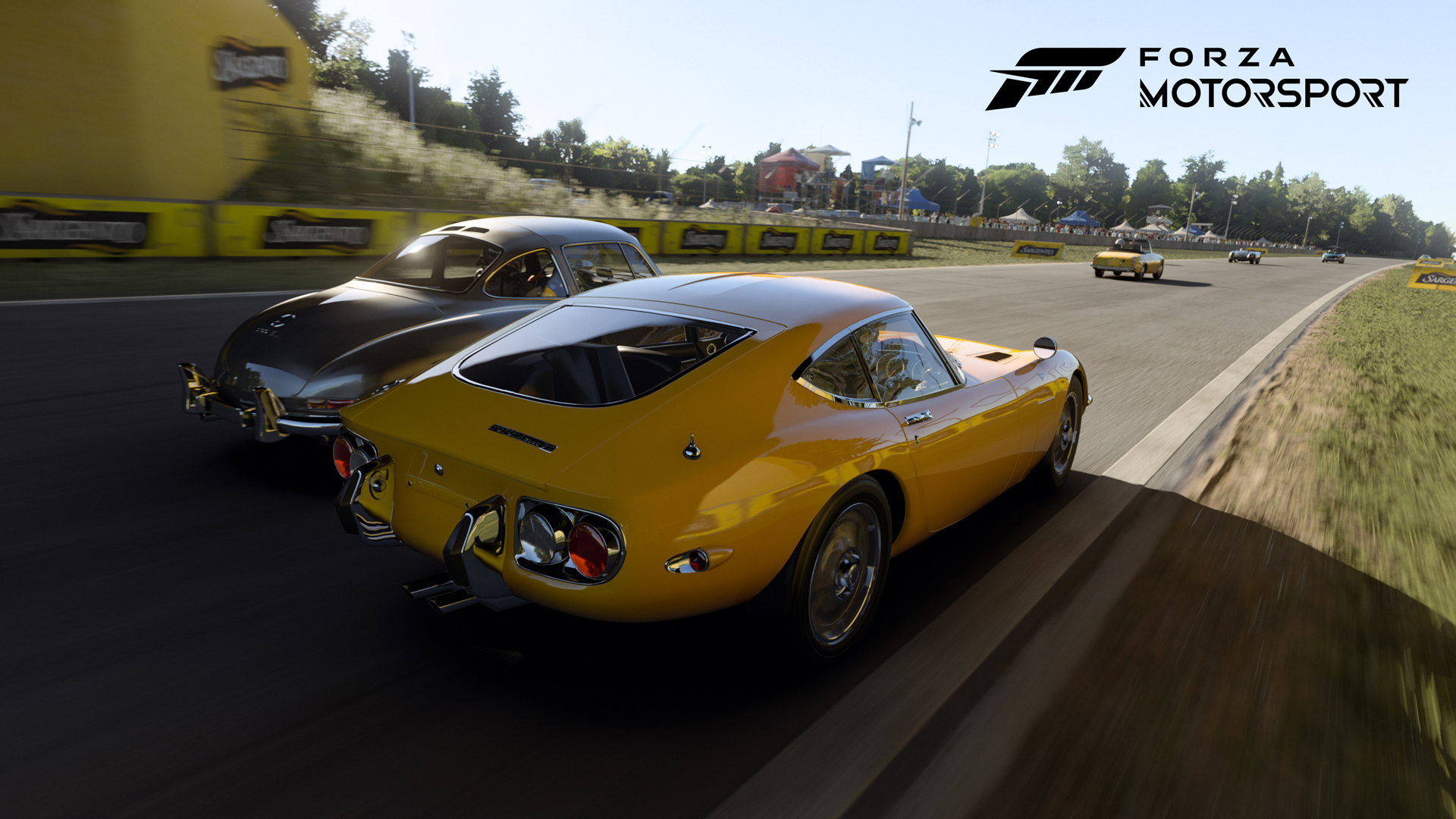
Cars are obviously the star of the show when it comes to a racing game, and that stands true in the case of Forza Motorsport as well. Turn10 has meticulously re-created each and every car with painstaking attention to detail. The game features well over 500 cars from different manufacturers across the globe, and each of these cars is an exact replica of their real-life variants.
Materials are of the physically based kind, which ensures that material like carbon fiber behaves differently than leather which behaves differently than glass. The quality of these materials is really high, and these vehicles exude a sense of grandeur thanks to thick coats of shiny paints and chrome platings.
Of course, it also helps that these cars are geometrically complex models with tons of details that gearheads can obsess over for hours on end. Much like its predecessors, Forza Motorsport also features a detailed car damage model that scuffs and scratches the car with each collision from your opponents and environments.
The car damage model itself is a lot better this time around, and each car crash is accompanied by demodeled car geometry, cracked window panes, and scratches on the sides. Of course, there are a bunch of simulations for the physics behind it all – but the visible results look a lot more believable this time around.
Tracks and Environments
Moving over to the tracks, Turn10 utilizes photogrammetry-based textures to great effect. Track surfaces look pretty realistic with tons of detail. The screeching of car tires leaves thick trails on the track, which is accompanied by some gorgeous volumetric smoke. But the biggest change that we have seen this time around is in the surrounding environments, which have seen a noticeable uptick in quality.
Asset quality is high across the board and everything from the crowd to the vegetation and surrounding geometry looks decent. Of course, you will be able to notice some inconsistencies and relatively low fidelity levels if you stop and stare at these objects – but they do look generally okay when you’re blazing past them at high speeds.
Weather Effects
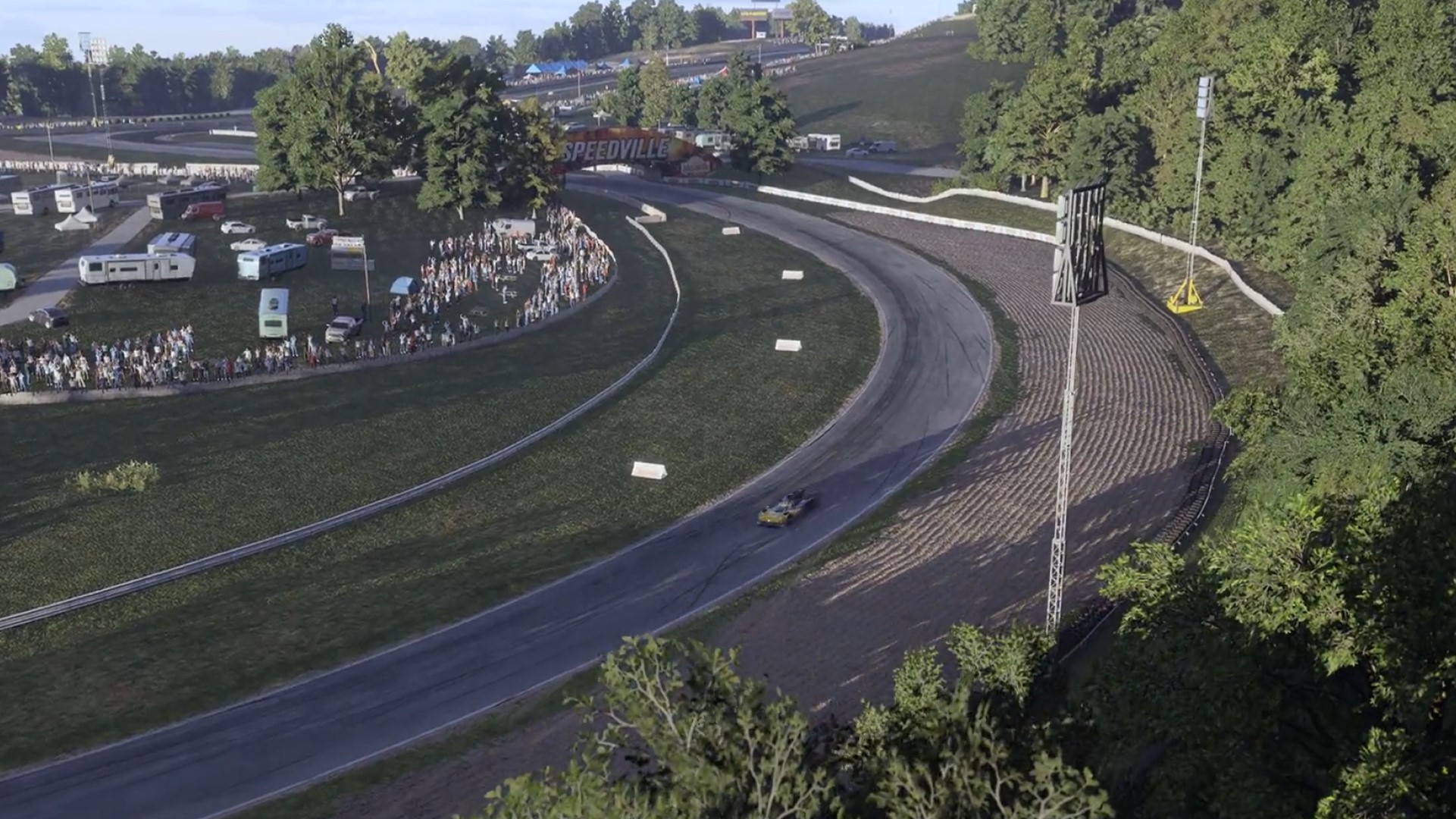
As mentioned previously, Forza Motorsport introduces a dynamic time-of-day system, which allows for significant changes to the track and environments during a race. You may start a race in the afternoon, and see the Sun set during the final laps. These changes not only affect the visual aesthetics of the track, but the changes in ambient temperature will also affect driving variables like grip – which can also add an element of challenge to the gameplay proceedings.
The sky rendering also seems to be using some sort of photogrammetry combined with volumetric structures for clouds, and these clouds also shift during daytime changes in an effort to mimic their behavior in real life. The volumetric meshes are definitely quality stuff, and the skybox looks really good in action.
Lighting, Reflections, And Shadows

Switching gears to the lighting, Forza Motorsport uses the same global illumination solution as Forza Horizon 5. The team internally calls this implementation Surfel GI, and it works to great effect for a dynamically lit game like this one. There’s no use of baked-in lighting data, and the direct lighting leverages hardware-accelerated ray tracing to create realistic scenes. Of course, there’s a lot more than that too – but delving too deep into those details might be beside the point of this discussion.
While the game is launching with this Surfel GI, Turn10 plans to eventually add in an option of RTGI to make full use of ray-tracing for global illumination as well. Reflections in Forza Motorsport look superb, and a lot of that can yet again be attributed to the smart usage of real-time ray tracing. The game makes good use of ray-traced reflections, and as a result – car bodies accurately reflect the surroundings and parts of themselves on their coats of shiny paint. Reflections also update at a steady pace, which helps in selling the element of speed when you’re racing at a hundred miles an hour.
Another aspect where Forza Motorsport uses ray-tracing is the ambient occlusion, which creates realistic soft shadows across the entire body of vehicles and the ground. As such, cars don’t look like they have been plastered on the track in an artificial way – but feel like they are a living, breathing part of the game world.
And now let’s talk about shadow maps. Shadows are appropriately high quality, and are casted for objects up to far distances. This helps in achieving a uniform look for the game world, which in turns makes it feel like a real breathing place. You can obviously peep into the details to find some artifacts along the edges of shadows – but it isn’t all that noticeable when you are zooming past these picturesque landscapes at high speeds.
Post-Processing
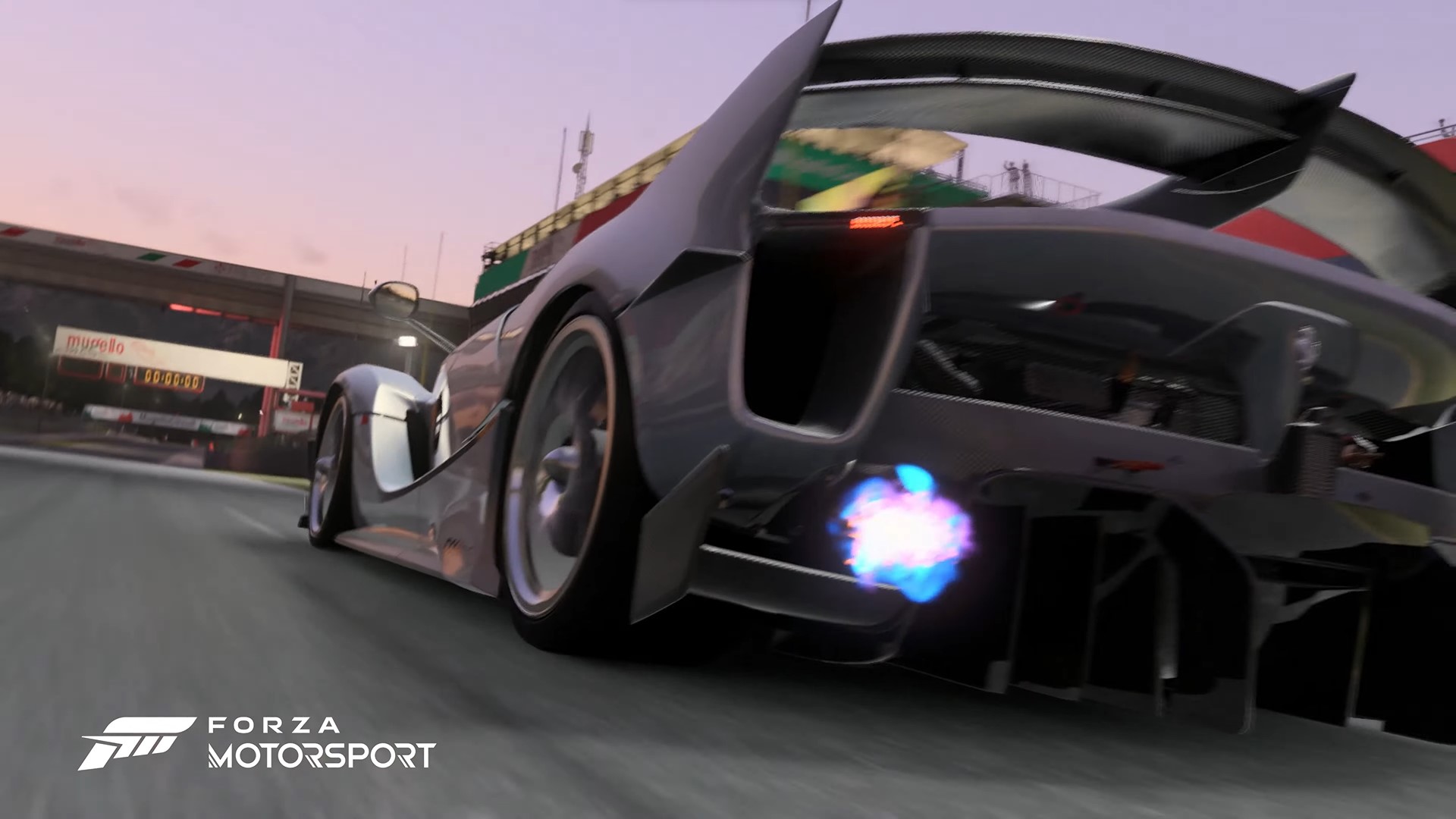
As mentioned in a pre-release interview with Digital Foundry, Forza Motorsport marks a big change in how it handles anti-aliasing. Prior entries made good use of MSAA to clean up the artifacts, but now the developer has switched to a TAA solution. That wouldn’t initially seem like a smart move since TAA implementations can soften the image which doesn’t look good in the case of racers, but Forza’s implementation avoids those issues and cleans up the image while retaining a crisp look.
Forza Motorsport also makes generous use of volumetric meshes in not only the clouds but also the smoke that emits out of your car’s exhaust and the fog that sits on the race track in select weather conditions. Volumetric meshes can also react with light and diffuse them accordingly, and that looks really good in action. Particle effects are few and far between, but you will notice some high-quality alpha particles during car collisions or when a car uses its boost. These particles also appropriately cast reflections on car bodies, and it looks absolutely gorgeous.
Xbox Series X Graphics Modes And Their Difference With PC Version
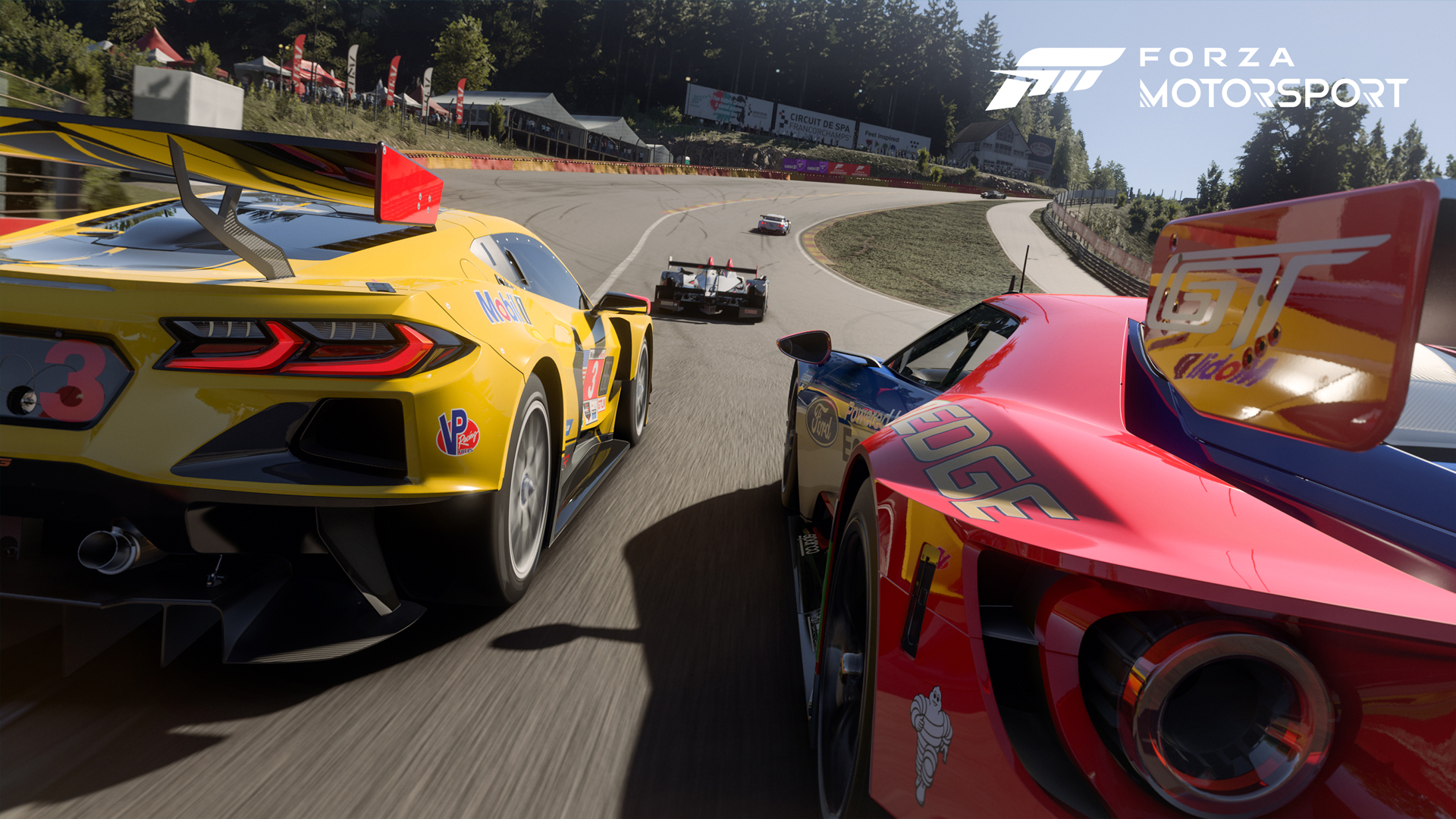
On Xbox Series X, Forza Motorsport features a total of 3 distinct graphics options. The first one is the Visuals mode. This mode features ray-traced reflections and RTAO at a resolution of dynamic 4K with a frame-rate cap of 30fps. The second mode is Performance RT, which also keeps ray tracing intact but bumps the frame rate to 60fps at the same dynamic 4K resolution. As you can imagine, dynamic resolution scaling is a lot more aggressive in this mode – though the anti-aliasing solutions do a good enough job of cleaning up the jagged edges and it’s a fine trade-off for the added fluidity.
Finally, we have Performance mode which turns off ray-tracing with a resolution of dynamic 4K and keeps the frame rate locked to 60fps. If you feel like you are having a competitive disadvantage due to the aggressive DRS on Performance RT option, Performance mode just might be the mode. All in all, Forza Motorsport has done a great job when it comes to graphics options – and it just goes on to show the impressive scalability of the underlying tech.
Taking a brief look at both versions of the game, the Quality version largely matches with the ultra settings that we use on our PC test rig. The resolution is a bit sharper on the PC version, which is most likely a byproduct of the aggressive DRS on the Xbox version. You can also make out minor differences in shadows and reflection quality, but the visual makeup is the same across both versions. They look great, and we didn’t make out any major differences between the two.
Xbox Series X and PC Performance
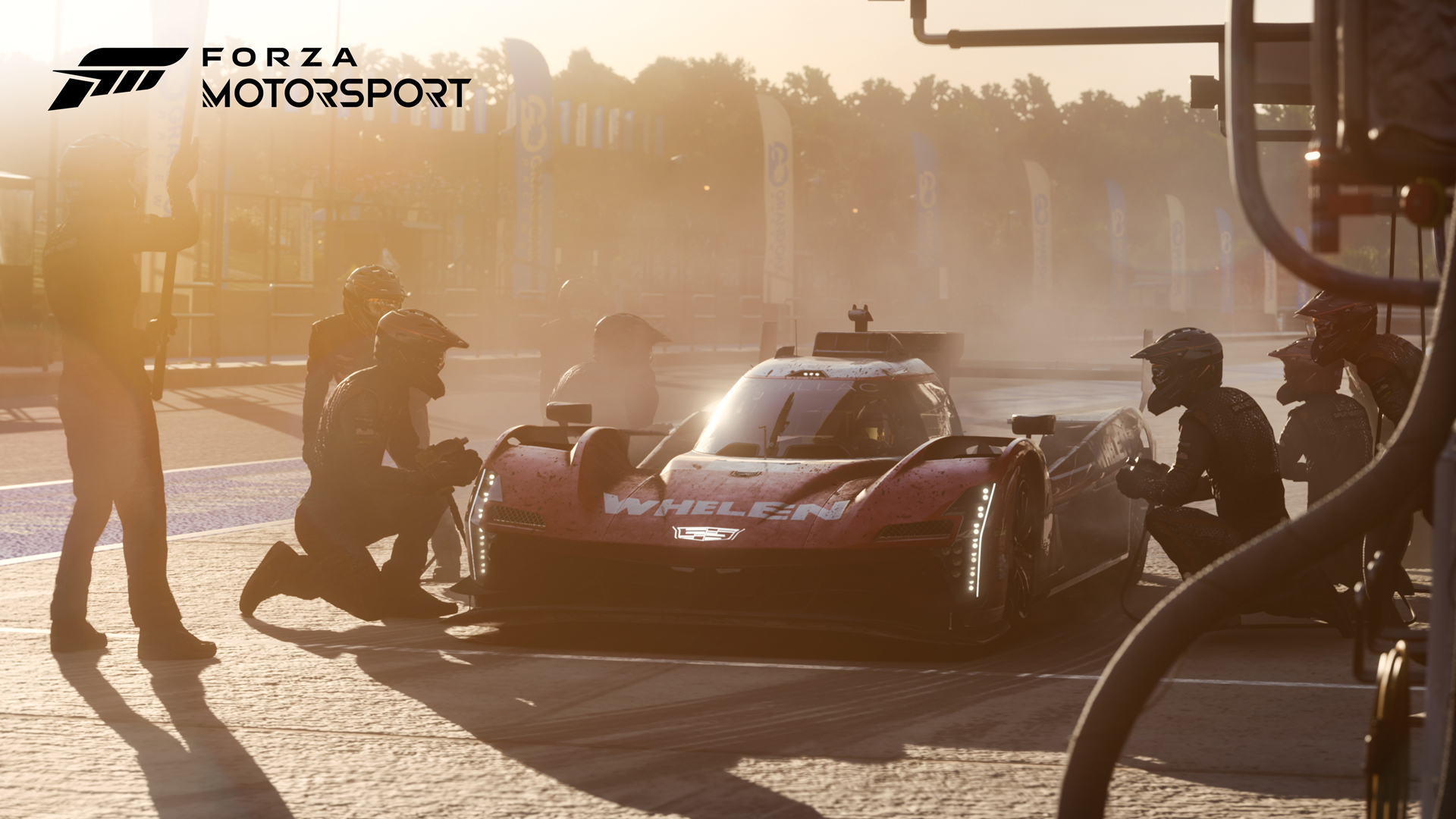
Forza Motorsport 2023 isn’t a really demanding game if you just look at the minimum specs; it only requires that you have an i5 8400, GTX 1060, and 8 GB of RAM to play at the lowest settings. However, if you wish to have a comfortable experience without compromising on the visuals – you need to have an i5 11600k, RTX 2080Ti, and 16 GB of RAM. The game also makes use of the Windows DirectStorage API, so you need to have the game installed on an SSD instead of an HDD.
Our test bench comprises an AMD Ryzen 5950X, RTX 3080Ti, and 32 GB of RAM which is well over what the game recommends. We also installed the game on a PCI e 4.0 SSD to make full use of Windows DirectStorage API.
Taking a look at the settings menu for the PC version of the game, it has a suite of options and a basic description of what each setting does. There are no comparison screenshots like Sony’s first-party ports or performance indicators for changing these settings, so it does leave something to be desired.
The game also has DLSS and FSR 2.0 support as well. For our testing, we went with a mostly ultra settings preset with DLSS turned on to optimize performance, and according to the in game metrics – the game was only using a maximum of 6 GBs of VRAM.
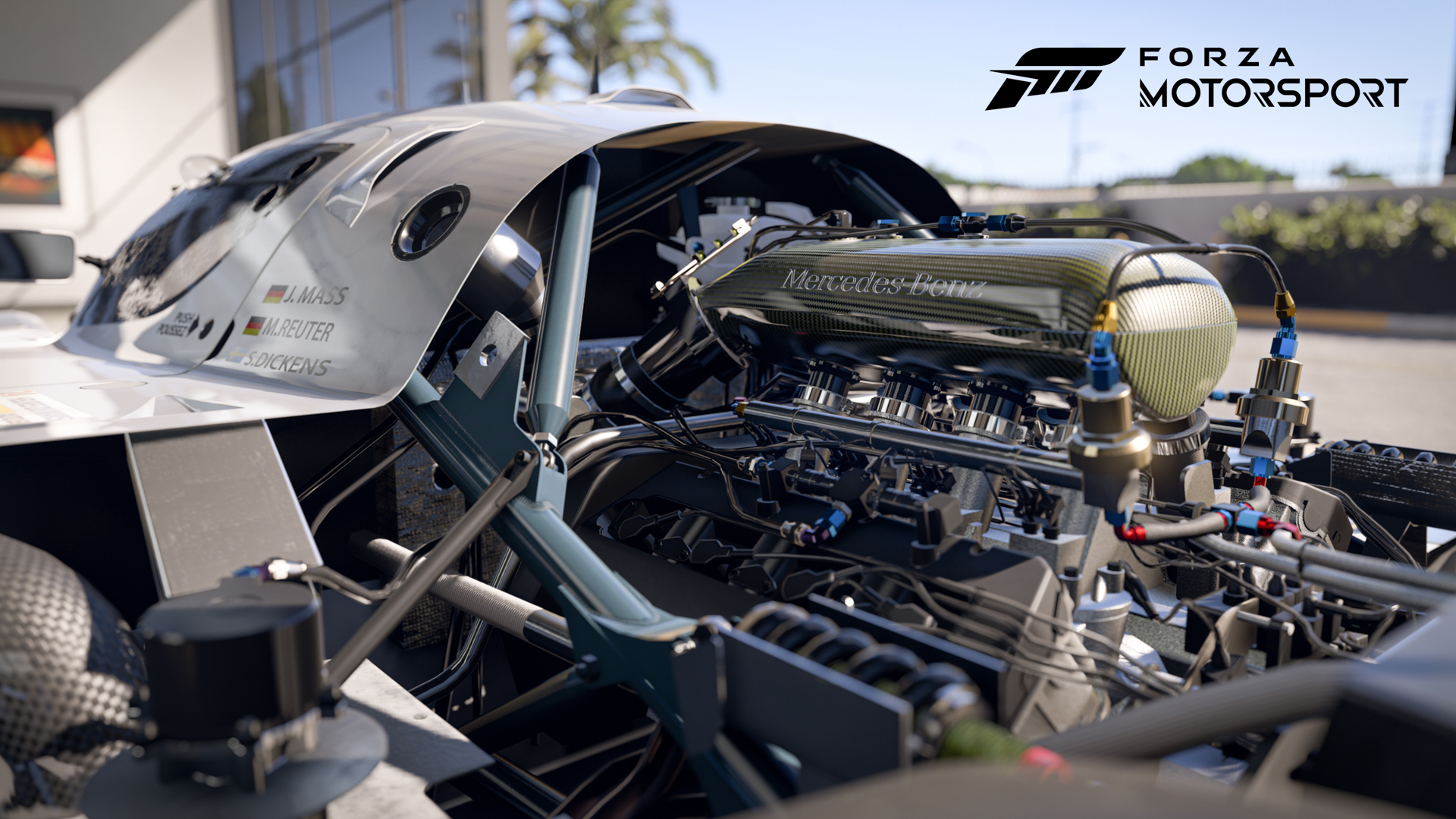
Now let’s talk about performance. Starting with Xbox Series X, the game does a good enough job of holding its own during the most intensive scenes. We didn’t notice any major frame-rate drops, and regardless of whether we played at 30fps or 60fps – the experience was smooth. As such, our recommendation would be to use the RT Performance mode to get the fluidity of 60fps without compromising on fidelity – but you are obviously free to pick your own poison.
For our PC testing, we were able to achieve a solid 60fps with the aforementioned ultra settings with DLSS Quality mode turned on. We noticed a few minor dips during intensive sequences such as heavy rain, but that didn’t really detract from the otherwise great experience with the game. There are some improvements inbound with the Day 1 patch, so that should help smooth these issues out. But overall, it performs solid and is a technically stable product with little in the name of hard crashes or game-breaking bugs.
Conclusion
Forza Motorsport is a strong debut for Turn10 and stands tall as an impressive graphics showcase for the power of the Xbox Series X. Almost every aspect of the visual presentation has seen minor to major changes, and that results in what is arguably the most realistic looking racer on the market. It doesn’t rewrite the playbook in any major way, but it’s a solid racer that doubles as a visual feast for the eyes.















